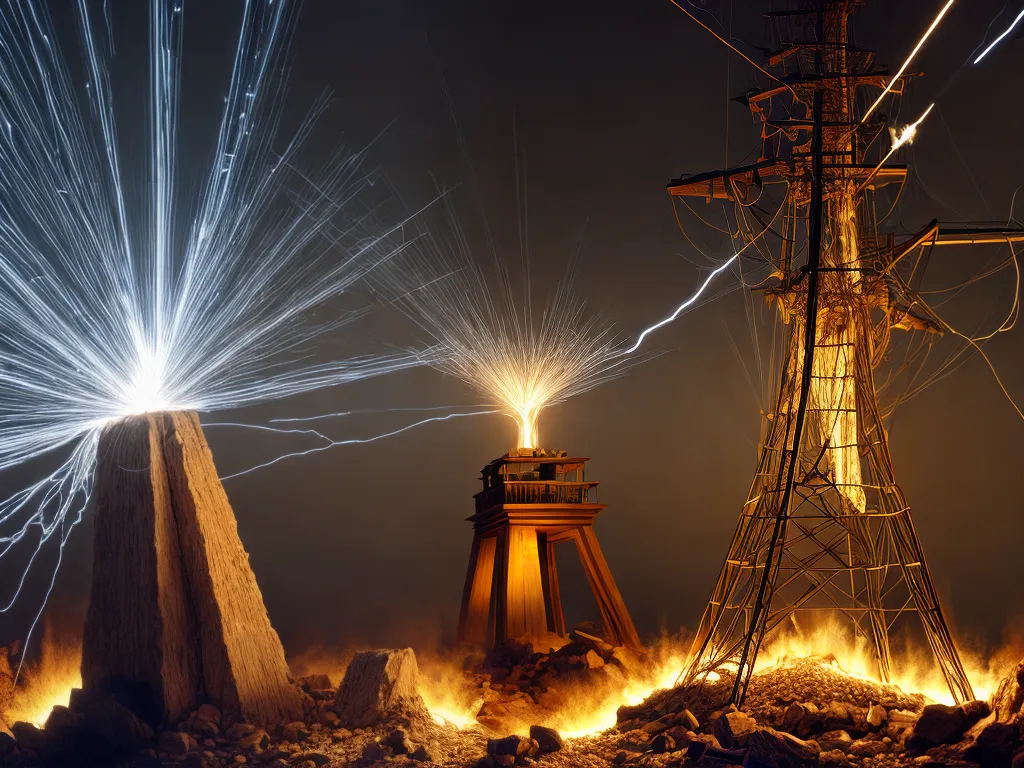
The Discovery of Electricity Sets the Foundation
The journey of electricity began in ancient times with the discovery of static electricity. Ancient cultures like the Greeks, Romans, and Chinese knew that rubbing certain materials together, like amber and silk, caused a mysterious attractive force. However, the nature of this force remained poorly understood for centuries.
In the 1700s, scientists conducted experiments that advanced our modern understanding of electricity. Benjamin Franklin's iconic kite experiment demonstrated a connection between lightning and static electricity. Luigi Galvani showed that electricity could make a frog's leg muscles contract. Alessandro Volta invented the first true battery, known as the voltaic pile.
These pioneering experiments revealed electricity as a powerful natural force that could be studied and harnessed. But applying this force for practical uses would require controlling electrical currents through wires and circuits - a concept still in its infancy.
Early Electrical Devices Were Crude and Dangerous
The first practical applications of electricity in the 1800s relied on primitive, unsafe methods. With no regulations or safety standards, engineers often used trial-and-error in designing electrical devices.
Arc lighting was an early form of electric illumination. It produced light by heating carbon rods until white-hot, which also generated dangerous sparks and fumes. Arc lighting filled the high ceilings of factories and public areas, but proved too intense for home use. Fires and electric shocks from arc lighting installations were not uncommon.
The telegraph, invented by Samuel Morse in 1837, ushered in the age of rapid long-distance communication. But early telegraph lines and equipment exposed users to dangerously high voltages. Many suffered shocks when operating telegraph keys.
Thomas Edison's creation of the first incandescent lightbulb in 1879 finally provided a practical form of electric lighting. But early electrical wiring methods used exposed copper conductors with poor insulation. This allowed wires to arc and overheat, creating fire hazards.
Haphazard Grids and Competition Led to Inefficiency
The late 1800s saw electric utilities compete to establish centralized power stations and distribution grids. But systems developed haphazardly, with little coordination across utility companies.
Thomas Edison championed direct current (DC) systems, which could only distribute electricity within a radius of a few miles from the generating plant. But Nikola Tesla's advocacy of alternating current (AC) soon prevailed, as it allowed electricity to be transmitted over much greater distances. This relegated Edison's DC systems to the scrap heap.
By the early 1900s, many major cities had multiple electric companies building overlapping distribution grids. Fierce competition led utilities to push systems beyond safe limits, at times shutting down entire sections of cities. This "war of the currents" and lack of standards created confusion and left many customers underserved.
Safety Hazards Persisted into the Early 1900s
Even as electric grids expanded rapidly in the early 20th century, safety hazards remained unchecked. Arc faults and stray currents continued to pose risks.
Exposed electrical wiring and light sockets in homes led to fires and electrocutions. Insulation materials like cloth and paper were highly flammable. Circuit breakers as we know them today had not yet been invented. Fuses needed to be replaced manually when they blew.
Appliances and tools like irons, heaters, and fans drew high currents through crude resistive wiring. Faults could release thousands of volts.
Workers installing and maintaining electrical systems often lacked proper safety training. They regularly suffered severe injuries and deaths from electrocution.
Centralized Regulations Emerged Slowly
The electrical industry began adopting safety standards and regulations only gradually over the decades.
New York City enacted the first local electrical code in 1890, mandating permits and inspections for electrical work. The National Electrical Code published its first edition in 1897. Product safety testing grew via institutions like Underwriters Laboratories, founded in 1894.
Regulations slowly expanded to cover issues like circuit isolation, fuse standards, and insulation requirements. But many cities and states lagged behind in adopting codes. It took years to reach nationwide standards and oversight.
Mandatory operator training, protective equipment, and safe operating protocols greatly improved worker safety. But accidents still occurred regularly into the mid-1900s.
Thus, the first electrical grids developed through an unpredictable process of trial and error. With no precedents for large-scale power systems, safety was an afterthought. But harsh lessons over many years led to the reliable modern grids we enjoy today.